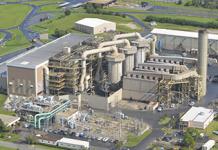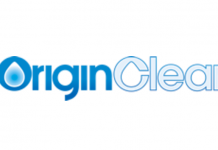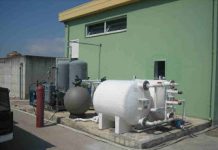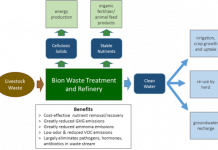by Debra Fiakas CFA
![]() In 2007, industrial gas supplier Praxair (PX: NYSE) teamed up with power plant equipment dealer Foster Wheeler (FSLT: Nadaq) to work on demonstration projects for cleaning up coal-fired electric generating plants. At first the duo planned to pursue clean coal technologies and oxygenated coal combustion systems. The joint press release at the time indicated Praxair’s “oxy-coal’ technology would be applied to Foster Wheeler’s ‘circulating fluidized-bed steam generators.’ The oxycombustion process is one of several proposed methods to capture carbon dioxide from coal-fired power plants. In a retrofit situation, pure oxygen would replace air required for combustion, and the oxygen would likely be supplied via a cryogenic air separation unit. Praxair was to provide the upstream oxygen supply and the downstream carbon dioxide capture and gas processing technologies.
In 2007, industrial gas supplier Praxair (PX: NYSE) teamed up with power plant equipment dealer Foster Wheeler (FSLT: Nadaq) to work on demonstration projects for cleaning up coal-fired electric generating plants. At first the duo planned to pursue clean coal technologies and oxygenated coal combustion systems. The joint press release at the time indicated Praxair’s “oxy-coal’ technology would be applied to Foster Wheeler’s ‘circulating fluidized-bed steam generators.’ The oxycombustion process is one of several proposed methods to capture carbon dioxide from coal-fired power plants. In a retrofit situation, pure oxygen would replace air required for combustion, and the oxygen would likely be supplied via a cryogenic air separation unit. Praxair was to provide the upstream oxygen supply and the downstream carbon dioxide capture and gas processing technologies.
A year later, in August 2008, Praxair seized on a U.S. Department of Energy program supporting clean coal technologies. This time Praxair was locked arm-in-arm with the Jamestown Oxy-Coal Alliance to demonstrate the capture of carbon dioxide emissions from coal-fired power plants. Praxair was trying to develop a process configuration for integrating ‘oxygen transport membranes’ in the power generation process at coal-fired power plants.
Subsequently Praxair received $1.2 million in funds from the American Recovery & Reinvestment Act in 2009, to demonstrate carbon capture and sequestration from a hydrogen production facility in oil refinery. The project has been reported as complete, but Praxair has been somewhat circumspect on actual results.
Then in September 2010, the DOE cut a bigger check for $35 million for the oxy-combustion project. The grant was one of a long list for industrial carbon capture projects. In total the DOE pledged $575.5 million to carbon capture. The Jamestown project has been soundly criticized as ill advised because of high costs for oxygen production, compression of carbon dioxide to liquid and pumping to and injection in the storage site. Some estimated a permanent government subsidy would be necessary to keep the project going. The DOE was undeterred. A key promise in Praxair’s oxygen transport membranes is efficiency, resulting in a 75% reduction the costs for in oxygen production.
Praxair’s perseverance in carbon capture is remarkable. This is especially more the case since Praxair is also one of the world’s largest producers of carbon dioxide in box liquid and gas form. Yes, Praxair sells carbon dioxide for everything from carbonating beverages to helping loosening up gas deposits.
A stake in Praxair is more a stake in carbon production than carbon capture. Praxair trades near 20 times trailing earnings, which totaled $1.7 billion in the most recently reported twelve months. Revenue was $11.2 billion. Even with a 2.2% dividend yield that valuation seems a bit pricey given that the consensus estimate for annual earnings growth is only 12.0% over the next five years. The company is not among our usual small-cap fare, but I have to think that Praxair is going to be a leader in carbon capture it is coming about. The required technology appears to be challenging, but when a fix is found, it will benefit from a very large market opportunity represented by coal-fired power plants the world over.
Debra Fiakas is the Managing Director of Crystal Equity Research, an alternative research resource on small capitalization companies in selected industries.
Neither the author of the Small Cap Strategist web log, Crystal Equity Research nor its affiliates have a beneficial interest in the companies mentioned herein.








